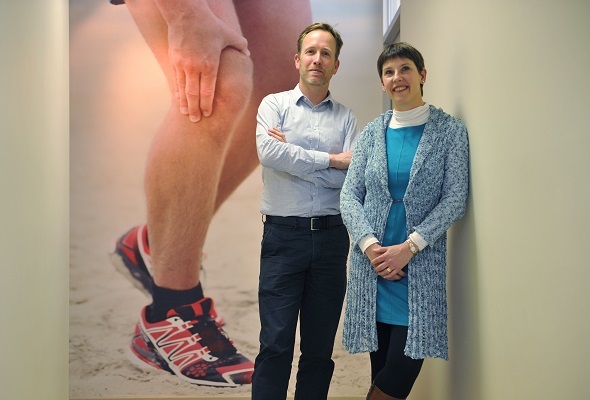Leading sports injury clinic 'goes public'
16 October 2015 | Story by Newsroom
Training and rehabilitating top sportspeople after injury is core business at the Sports Science Institute of South Africa (SSISA), which is located in the shadow of Newlands rugby stadium, and their services have now been extended to the public.
SSISA is home to the UCT/MRC Research Unit for Exercise Science and Sports Medicine.
Leading this initiative is Dr Jeroen Swart. Having filled the vacancy in sports medicine in the Division of Exercise Science and Sports Medicine (Department of Human Biology) Swart's immediate mission is to 'reboot' the Sports Science Institute's clinical practice and make its expertise available to the broader public.
To do this, Swart has corralled a strong team of SSISA doctors: Jason Suter, Sid Allie, Adrian Rotunno, Gabi Prinsloo, Lee Gordon and Mike Kiessig.
All are connected to some of the country's top sports teams: Stormers/Western Province rugby, IPL cricket, cycling team MTN-Qhubeka, Rugby Sevens and AJAX soccer.
Swart, for example, has been AJAX team physician since 2007 and was head of the player's medical centre for the FIFA World Cup in 2010.
“Looking ahead, our aim is to make our discipline more relevant to the broader public.”
Swart is also keen to bring the institute's academic research into the practice.
“Lots of what we do in research is filed away and never read. It needs to be applied practically.”
New initiatives
There are two initiatives planned in the areas of cardiac and orthopaedic care and rehabilitation.
The first is to link up with Dr Nasief van der Schyff's cardiac rehabilitation programme at Victoria Hospital.
“We are planning to implement a public sector rehabilitation service here at the SSI, with the added benefits to the public of our accessibility and proximity to Newlands station and bus routes,” said Swart.
The second initiative involves orthopaedics.
To this end the practice will forge closer bonds with UCT's Department of Orthopaedics, in the Division of Orthopaedic Surgery.
“In the near future we hope to work closely with orthopaedics to be able to manage both non-surgical and surgical cases where rehabilitation is necessary.”
Career paths
Another key aspect of the practice with its broader public interface is the creation of clear career paths for sport and exercise medicine physicians.
“We're training them in our specialist programmes but few work exclusively in the sport and exercise medicine sector. We should be creating new opportunities for them.”
This career pathing also extends to the academic field, limited presently to the “probably half a dozen individuals around the country”, says Swart.
New sports medicine diploma
One of ESSM's key activities is to disseminate their knowledge and translate research into practice so that it directly benefits society.
Swart wants to see the unit's body of research and expertise “rolled down” to general practitioners and medical officers in the public sector by offering a diploma in sport and exercise medicine.
“Not all doctors are trained to recognise or treat sports injuries or to provide exercise rehabilitation to prevent and rehabilitate chronic diseases. Sports stars of the future could be sidelines by misdiagnosis and inappropriate management.”
Swart is ideally placed at the intersection of research, practice and elite performance.
As a top 800m athlete in the late 1990s, he competed in an era dominated by Hezekiél Sepeng and Marius van Heerden.
But for the fact that they narrowly eclipsed him, his life may have taken an altogether different turn.
As it was a knee injury put paid to running and he took up cycling, rising to a spot among the top three riders −including the late Burry Stander – to race professionally for three years and curtailing his career as a young doctor.
In the end, all these experiences worked for the good. Realising cycling wasn't a long-term plan, Swart returned to health sciences to specialise in sports medicine.
But cycling remains a passion. He heads up SSISA's Discovery High-Performance Cycling Centre. He has also worked Jan Ullrich and currently trains Ashleigh Moolman-Pasio, bronze medal winner in the 2014 Commonwealth Games.
Story by Helen Swingler. Image by Je'nine May.
 This work is licensed under a Creative Commons Attribution-NoDerivatives 4.0 International License.
This work is licensed under a Creative Commons Attribution-NoDerivatives 4.0 International License.
Please view the republishing articles page for more information.










